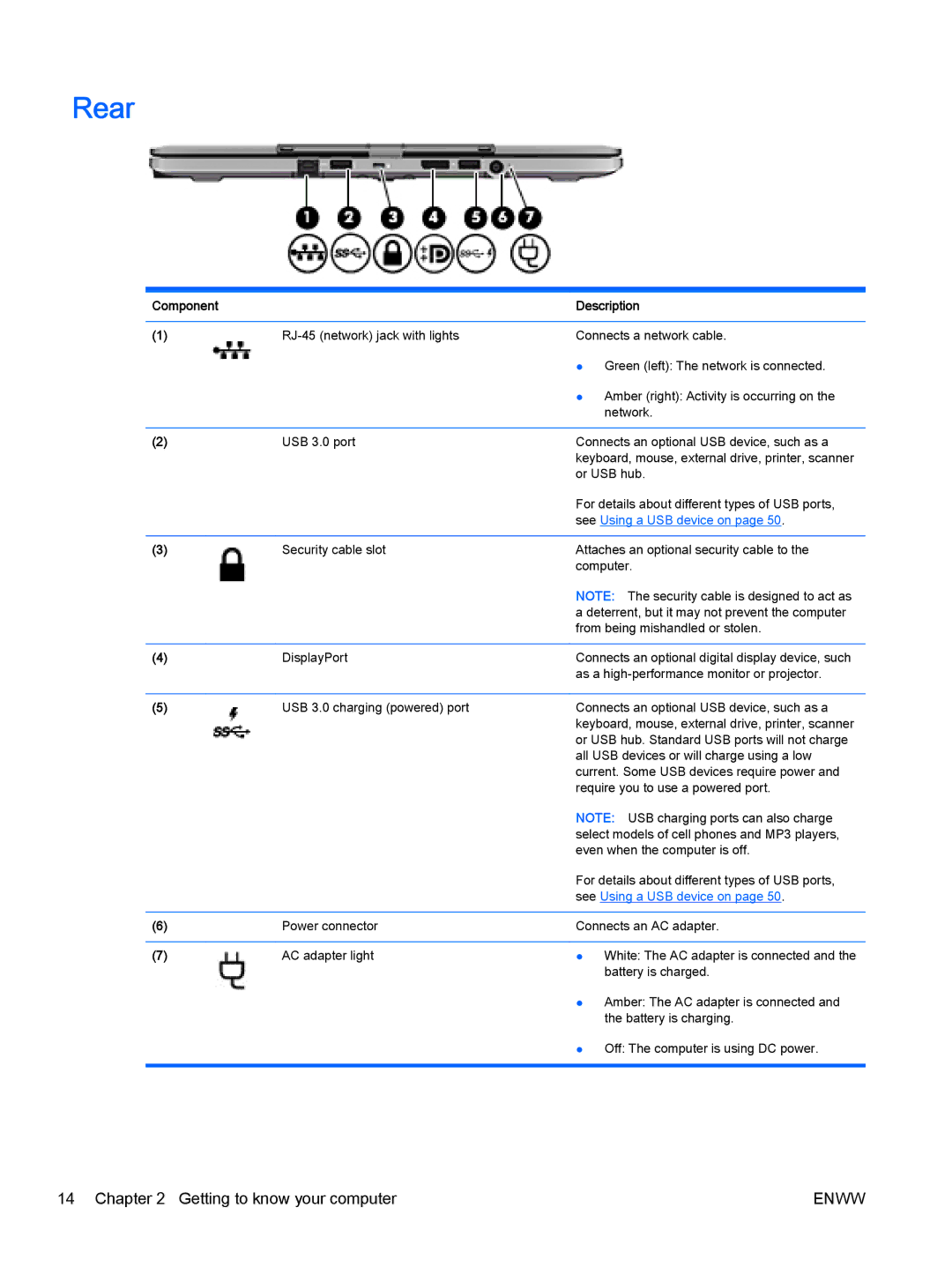
Rear
Component |
| Description |
|
|
|
(1) | Connects a network cable. | |
|
| ● Green (left): The network is connected. |
|
| ● Amber (right): Activity is occurring on the |
|
| network. |
|
|
|
(2) | USB 3.0 port | Connects an optional USB device, such as a |
|
| keyboard, mouse, external drive, printer, scanner |
|
| or USB hub. |
|
| For details about different types of USB ports, |
|
| see Using a USB device on page 50. |
|
|
|
(3) | Security cable slot | Attaches an optional security cable to the |
|
| computer. |
|
| NOTE: The security cable is designed to act as |
|
| a deterrent, but it may not prevent the computer |
|
| from being mishandled or stolen. |
|
|
|
(4) | DisplayPort | Connects an optional digital display device, such |
|
| as a |
|
|
|
(5) | USB 3.0 charging (powered) port | Connects an optional USB device, such as a |
|
| keyboard, mouse, external drive, printer, scanner |
|
| or USB hub. Standard USB ports will not charge |
|
| all USB devices or will charge using a low |
|
| current. Some USB devices require power and |
|
| require you to use a powered port. |
|
| NOTE: USB charging ports can also charge |
|
| select models of cell phones and MP3 players, |
|
| even when the computer is off. |
|
| For details about different types of USB ports, |
|
| see Using a USB device on page 50. |
|
|
|
(6) | Power connector | Connects an AC adapter. |
|
|
|
(7) | AC adapter light | ● White: The AC adapter is connected and the |
|
| battery is charged. |
● Amber: The AC adapter is connected and the battery is charging.
● Off: The computer is using DC power.
14 Chapter 2 Getting to know your computer | ENWW |
